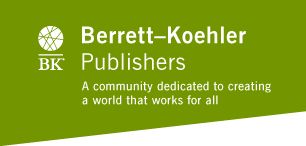Brief Contents
Chapter 1 Business Ethics, the Changing Environment, and Stakeholder Management
Chapter 2 Ethical Principles, Quick Tests, and Decision-Making
Chapter 3 Stakeholder and Issues Management Approaches
Chapter 4 The Corporation and External Stakeholders: Corporate Governance: From the Boardroom to the Marketplace
Chapter 5 Corporate Responsibilities, Consumer Stakeholders, and the Environment
Chapter 6 The Corporation and Internal Stakeholders: Values-Based Moral Leadership, Culture, Strategy, and Self-Regulation
Chapter 7 Employee Stakeholders and the Corporation
Chapter 8 Business Ethics Stakeholder Management in the Global Environment
DETAILED CONTENTS
Preface
Case Authorship
Chapter 1 Business Ethics, the Changing Environment and Stakeholder Management
1.1 Business Ethics and the Changing Environment
Seeing the “Big Picture”
Environmental Forces and Stakeholders
Stakeholder Management Theory and Approach
Point/CounterPoint Exercise
1.2 What is Business Ethics? Why Does It Matter?
Unethical Business Practices and Employees
Ethics and Compliance Programs
Why Does Ethics Matter in Business?
Working for the Best Companies
1.3 Levels of Business Ethics
Asking Key Questions
Ethical Insight 1.1
1.4 Five Myths about Business Ethics
Myth 1: Ethics Is a Personal, Individual Affair, Not a Public or Debatable Matter
Myth 2: Business and Ethics Do Not Mix
Myth 3: Ethics in Business Is Relative
Myth 4: Good Business Means Good Ethics
Myth 5: Information and Computing Are Amoral
1.5 Why Use Ethical Reasoning in Business?
1.6 Can Business Ethics Be Taught and Trained?
1.7 Plan of the Book
Cases: Cyberbullying; Madoff’s Ponzi Scheme
Chapter Summary
End-of-Chapter Questions and Exercises
Real-Time Ethical Dilemma
Chapter 2 Ethical Principles, Quick Tests, and Decision-Making
2.1 Ethical Reasoning and Moral Decision Making
Ethical reasoning explained
Who is ‘morally’ responsible’?
Ethical Insight 3.1, Are You Ethical?
2.2 Ethical Principles and Decision Making
2.2.1 Utilitarianism: A Consequentialist (Results-Based) Approach
Utilitarianism and Stakeholder Analysis
2.2.2 Universalism: A Deontological (Duty-Based) Approach
Universalism and Stakeholder Analysis
2.2.3 Rights: A Moral and Legal Entitlement-Based Approach
Rights and Stakeholder Analysis
2.2.4 Justice: Procedures, Compensation, and Retribution
Rights, Power, and ‘Transforming Justice’ and
Stakeholder Analysis
2.2.5 Virtue Ethics: Character-Based Virtues
Virtue Ethics and Stakeholder Analysis
2.2.6 The Common Good
2.2.7 Ethical Relativism: A Self-Interest Approach
Ethical Relativism and Stakeholder Analysis
2.2.8 Immoral, Amoral, and Moral Decision Making
2.3 Four Social Responsibility Roles
2.4 Levels of Ethical Reasoning and Moral Decision Making
Personal, Organizational, National/International
Stages of Moral Development, the Maturity Continuum
2.5 Identifying and Addressing Ethical Dilemmas
2.5.1 Individual Ethical Decision-Making Styles
Communicating and Negotiating across Ethical Styles
2.5.2 Quick Ethical Tests
2.6 Concluding Comments
Back to Louise Simms….
Chapter Summary
End-of-Chapter Questions and Exercises
Real-Time Ethical Dilemma
Cases: Ford’s Pinto Fires (No. 5); Jermone Kerviel (12); Sam Waksal at ImClone (17)
Chapter 3 Stakeholder and Issues Management Approaches
3.1 Stakeholder Management Approach Defined
Stakeholder Theory and Management Approach: Criticisms and Responses
3.2 Why Use a Stakeholder Management Approach for Business Ethics?
Stakeholders
Stakes
3.3 How to Execute a Stakeholder Analysis
Taking a Third-Party Objective Observer Perspective
Role of the CEO in Stakeholder Analysis; You as CEO
Summary of Stakeholder Analysis
3.4 Negotiation Methods: Resolving Stakeholder Disputes
Stakeholder Dispute Resolution Methods
3.5 Stakeholder Approach and Ethical Reasoning
3.6 Moral Responsibilities of Cross-Functional Area Professionals
Marketing and Sales Professionals and Managers as Stakeholders
R&D, Engineering Professionals, and Managers as Stakeholders
Accounting and Finance Professionals and Managers as Stakeholders
Public Relations Managers as Stakeholders
Human Resource Managers as Stakeholders
Summary of Managerial Moral Responsibilities
Issues
3.7 Issues Management, Stakeholder Approach, and Ethics: Integrating Frameworks
What is a Public Issue?
Other Public Issues?
Stakeholder and Issues Management: “Connecting the Dots”
Moral Dimensions of Stakeholder and Issues Management
Types of Issues Management Frameworks
3.8 Managing Crises
How Executives Have Responded to Crises
How to Management a Crisis: Recommendations
Ethical Insight 2.1
Chapter Summary
End-of-Chapter Questions and Exercises
Real-Time Ethical Dilemma
Cases: The BP Deepwater Horizon Explosion & Oil Spill; Genetic Discrimination; Mattel Toy Recalls
Chapter 4 THE CORPORATION AND EXTERNAL STAKEHOLDERS
Corporate Governance: From the Boardroom to the Marketplace
4.1 Managing Corporate Social Responsibility in the Marketplace
Ethical Insight 4.1
Free-Market Theory and Corporate Social Responsibility
Problems with the Free-Market
Point CounterPoint exercise
4.2 Managing Corporate Responsibility with External Stakeholders
The Corporation as Social and Economic Stakeholder
The Social Contract: Dead or Desperately Needed?
Balance between Ethical Motivation and Compliance
Covenantal Ethic
Moral Basis and Social Power of Corporations as Stakeholders
Corporate Philanthropy
Reputation Counts:
Managing Stakeholder Profitably and Responsibly
Ethical Insight 4.2
4.3 Managing and Balancing Corporate Governance, Compliance, and Regulation
Ethical Insight 4.3
Ten Most and Least Reputable Brands
Governance Practices
Sarbanes-Oxley Act
Pros and Cons with Implementing the Sarbanes_Oxley Act
Federal Sentencing Guidelines
4.4 The Role of Law and Regulatory Agencies in Corporate Compliance
Why Regulation?
Laws and U.S. Regulatory Agencies
Laws Protecting Consumers
Laws Protecting the Environment
4.5 Managing External Issues and Crises: Lessons From the Past (Back to the Future?)
Chapter Summary
End-of-Chapter Questions and Exercises
Real-Time Ethical Dilemma
Cases: Conscious Capitalism; Goldman Sachs; Google Books
Chapter 5 Corporate Responsibilities, Consumer Stakeholders, and the Environment
5.1 Corporate Responsibility Toward Consumer Stakeholders
Corporate Responsibilities and Consumer Rights
Consumer Protection Agencies and Law
5.2 Corporate Responsibility in Advertising
Ethics and Advertising
The FTC and Advertising
Pros and Cons of Advertising
Ethical Insight 5.1
Advertising and Free Speech
Ethical Insight 5.2
Paternalism, Manipulation, or Free Choice?
5.3 Controversial Issues in Advertising: the Internet, Children, Tobacco, and Alcohol
Ethical Insight 5.3
Advertising to Children
Tobacco Advertising
The Tobacco Controversy Continues
Alcohol Advertising
Ethical Insight 5.4
5.4 Managing Product Safety and Liability Responsibly
How Safe Is Safe? The Ethics of Product Safety
Ethical Insight 5.5
Product Liability Doctrines
Legal and Moral Limits of Product Liability
Product Safety and the Road Ahead
5.5 Corporate Responsibility and the Environment
Most Significant Environmental Problems
Causes of Environmental Pollution
Enforcement of Environmental Laws
The Ethics of Ecology
Green Marketing, Environmental Justice, and Industrial Ecology
Rights of Future Generations and Right to a Livable Environment
Recommendations to Managers
Chapter Summary
End-of-Chapter Questions and Exercises
Point/Counterpoint Excercise
Real-Time Ethical Dilemma (or Not?)
Cases: For-Profit Education (No. 6); Fracking: Drilling for Disaster? (7); Neuromarketing (16); Wall-Mart and Gender Discrimination
Chapter 6 The Corporation and Internal Stakeholders. Values-Based Moral Leadership,
Culture, Strategy, and Self-Regulation
6.1 Leadership and Stakeholder Management
Defining Purpose, Mission, and Values
Ethical Insight 6.1
Ethical Insight 6.2
Leadership Stakeholder Competencies
Example of Companies Using Stakeholder Relationship Management
Spiritual Values, Practices, and Moral Courage in Leading
Failure of Ethical Leadership
Ethical Dimensions of Leadership Styles
How Should CEOs as Leaders Be Evaluated and Rewarded?
6.2 Organizational Culture, Compliance, and Stakeholder Management
Organizational Culture Defined
High-Ethics Companies
Weak Cultures
6.3 Leading and Managing Strategy and Structure
Organizational Structure & Ethics
Boundaryless and Networked Organizations
6.4 Leading and Balancing Internal Stakeholder Values in the Organization
6.5 Corporate Self-Regulation and Ethics Programs: Challenges and Issues
Ethical Insight 6.3
Organizations and Leaders as Moral Agents
Ethics Codes
Codes of Conduct
Problems with Ethics and Conduct Codes
Ombuds and Peer Review Programs
Is the Organization Ready to Implement a Values-Based Stakeholder Approach? A Readiness Checklist
Chapter Summary
End-of-Chapter Questions and Exercises
Real-Time Ethical Dilemmas
Cases: Keiser Permanente; Social Networking & Social Responsibility
Chapter 7 Employee Stakeholders and the Corporation
7.1 Employee Stakeholders in the Changing Workforce
Managing and Working with Diversity
The Aging Workforce
Generational Differences in the Workplace
Steps for Integrating a Multigenerational Workforce
Ethical Insight 7.1
Point/CounterPoint Exercise
Women in the Workforce
Same-Sex Marriages, Civil Unions, Domestic Partnerships, and Workforce Rights
The Increasing Cultural Mix: Minorities Are Becoming the Majority
Educational Weaknesses and Gaps
Mainstreaming Disabled Workers
Balancing Work/Life in Families
7.2 The Changing Social Contract between Corporations and Employees
Good Faith Principle Exception
Public Policy Principle Exception
Implied Contract Exception
7.3 Employee and Employer Rights and Responsibilities
Ethical Insight 7.2
Moral Foundation of Employee Rights
The Principle of Balance in the Employee and Employer Social Contract and the Reality of Competitive Change
Rights from Government Legislation
Employer Responsibilities to Employees
Employee Rights and Responsibilities to Employers
Employee Rights in the Workplace
Other Employee Rights and Obligations to Employers
7.4 Discrimination, Equal Employment Opportunity, and Affirmative Action
Ethical Insight 7.3
Discrimination
Equal Employment Opportunity and the Civil Rights Act
Age and Discrimination in the Workplace
Comparable Worth and Equal Pay
Affirmative Action
Ethics and Affirmative Action
Reverse Discrimination: Arguments against Affirmative Action
7.5 Sexual Harassment in the Workplace
What Is Sexual Harassment?
Who Is Liable?
Tangible Employment Action and Vicarious Liability
Sexual Harassment and Foreign Firms in the United States
7.6 Whistle-Blowing versus Organizational Loyalty
When Whistle-Blowers Should Not Be Protected
Factors to Consider before Blowing the Whistle
Managerial Steps to Prevent External Whistle-Blowing
Chapter Summary
End-of-Chapter Questions and Exercises
Real-Time Ethical Dilemma
Cases: Facesbook and PreEmployment; Women on Wall Street;
Chapter 8 Business Ethics & Stakeholder Management in the Global Environment
8.1 The Connected Global Economy and Globalization
Ethical Insight 8.1
8.2 Managing and Working in a “Flat World”: Professional Competencies and Ethical Issues
Shared Leadership in Teams’ Competency
Ethical Insight 8.2
Global Ethical Values and Principles
Know Your Own Cultural and Core Values, Your Organization’s, and Those with Whom You Are Working
Cross-Cultural Business Ethical Issues Professionals May Experience
8.3 Societal Issues and Globalization: The Dark Side
International Crime and Corruption
Economic Poverty and Child Slave Labor
The Global Digital Divide
Westernization (Americanization) of Cultures
Loss of Nation-State Sovereignty
8.4 Multinational Enterprises as Stakeholders
8.5 Triple Bottom Line, Social Entrepreneurship, and Microfinancing
Microfinancing
Social Enterpreneurs and Social Enterprises
8.6 MNES: Stakeholder Values, Guidelines, and Codes for Managing Ethically
Employment Practices and Policies
Consumer Protection
Environmental Protection
Political Payments and Involvement
Basic Human Rights and Fundamental Freedoms
8.7 Cross-Cultural Ethical Decision-Making and Negotiation Methods
External Corporate Monitoring Groups
Individual Stakeholder Methods for Ethical Decision Making
Four Typical Styles of International Ethical Decision Making
Hypernorms, Local Norms, and Creative Ethical Navigation
Chapter Summary
End-of-Chapter Questions and Exercises
Real-Time Ethical Dilemma
Cases: Google in China; Sweatshops; The U.S. Industrial Food System
Index
ABOUT THE AUTHOR
 0 items in cart
0 items in cart









